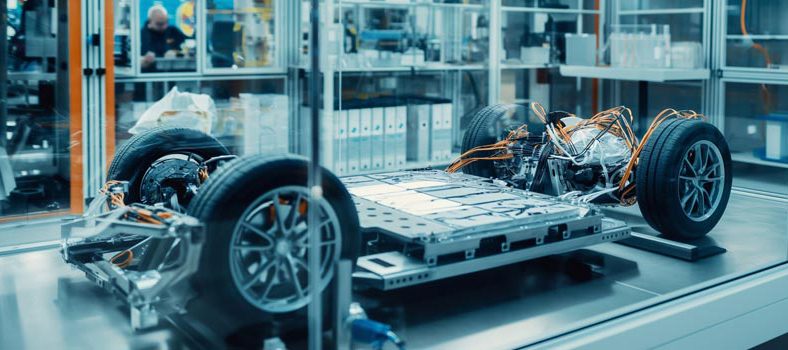We humans are, at least in theory, proceeding with a broad range of measures to slow climate change —deploying renewable energy sources, protecting forests, cleaning up industrial emissions, etc. According to a recent study by the World Resources Institute, only a single one of these projects is currently on track to meet the goals set by the 2015 Paris Agreement: light-duty electric vehicle sales.
However, suburban Tesla drivers might be surprised to learn that the majority of the emissions reductions from EVs have been delivered by two- and three-wheel EVs in the developing world. According to a recent report from BloombergNEF, light-duty EVs are projected to displace about 4 percent of total oil demand this year, and two- and three-wheel vehicles account for 60 percent of that reduction.
In rich countries, motorcycles and electric bikes tend to be seen as luxury items, and three-wheelers are pretty much non-existent. But in the developing world, these small vehicles provide essential transportation for billions of people.
As the New York Times reports, the global transition to electric two- and three-wheelers is proceeding rapidly in certain countries. In India, more than half of all new three-wheeled vehicles sold this year were EVs. In Kenya and Rwanda, where motorcycles often serve as taxis, start-ups are devising innovative ways to overcome roadblocks such as high up-front costs and limited charging infrastructure. Indonesia and Thailand are also encouraging electrification of motorcycle taxis.
“Electric bikes are quieter, much more efficient and good for the environment,” Jesse Forrester, the founder of Kenyan firm Mazi Mobility, told the Times. His company operates some 60 electric motorcycle taxis, locally known as boda-bodas, on the roads in Nairobi. “There’s a quiet revolution now in Kenya driving this transformation for the future.”
In India, Hero MotoCorp offers an electric scooter for under $1,800. Ride-sharing companies such as Ola are beginning to electrify. Honda, which has shown little interest in selling EVs in the US, plans to launch an electric motorcycle in India in 2024.
Unsurprisingly, China dominates the market. According to the Times, a vast majority of the world’s electric two-wheelers are in China.
Battery swapping has been abandoned by most (not all) automakers, but it may find a viable use case in the two- and three-wheel market. In Nairobi, ARC Ride, another electric boda-boda start-up, has installed 72 swap stations, and plans to deploy 25 more in the coming months. Customers use a phone app to unlock a cabinet, and exchange a spent battery for a fully charged one.
“We are interested in a solution that’s going to enable mass electric transport,” said ARC Ride’s Felix Saro-Wiwa (grandson of the famous human-rights activist Ken Saro-Wiwa).
The Times reports that, out of an estimated 1.3 million boda-bodas on the road in Kenya, some 1,500 are electric. The government hopes to increase that number—President William Ruto, has set a target of 200,000 electric motorcycles before 2025. Cost is a major hurdle, so boda-boda sellers such as Mazi and ARC work with lenders to offer affordable loans. Meanwhile, Uber has an electric two-wheeler pilot going in Nairobi.
India is subsidizing electrification—the government plans to invest $1.2 billion in various incentive programs, and hopes to make 30 percent of vehicles on the road battery-powered by 2030.
By all accounts, EVs are selling briskly in the Indian market. Food delivery services are going electric, and ironically, petroleum giant Reliance Industries is reportedly converting its three-wheeled cargo vehicles from gas to electric. Balaji Motors in Darbhanga told the Times that it’s selling around 200 electric rickshaws per month, and expects them to dominate the streets within two years.
Chetan Maini of charging infrastructure firm Sun Mobility told the Times that falling battery prices are quickly lowering the cost of two- and three-wheel EVs. “When the crossover point happens here, the effect [will be] very quick, hockey-stick shaped, because it’s more price-sensitive.”
In other countries, the voltage level is far lower. Mexico’s President Andrés Manuel López Obrador is seen as a major supporter of the petroleum industry. His government (like most others, to be fair) heavily subsidizes fossil fuels, and offers few electric vehicle incentives.
According to the Mexican Association of Motorcycle Manufacturers and Importers, only 1,000 out of 1.25 million motorcycles sold in the country last year were electric.
Source: New York Times



















































































